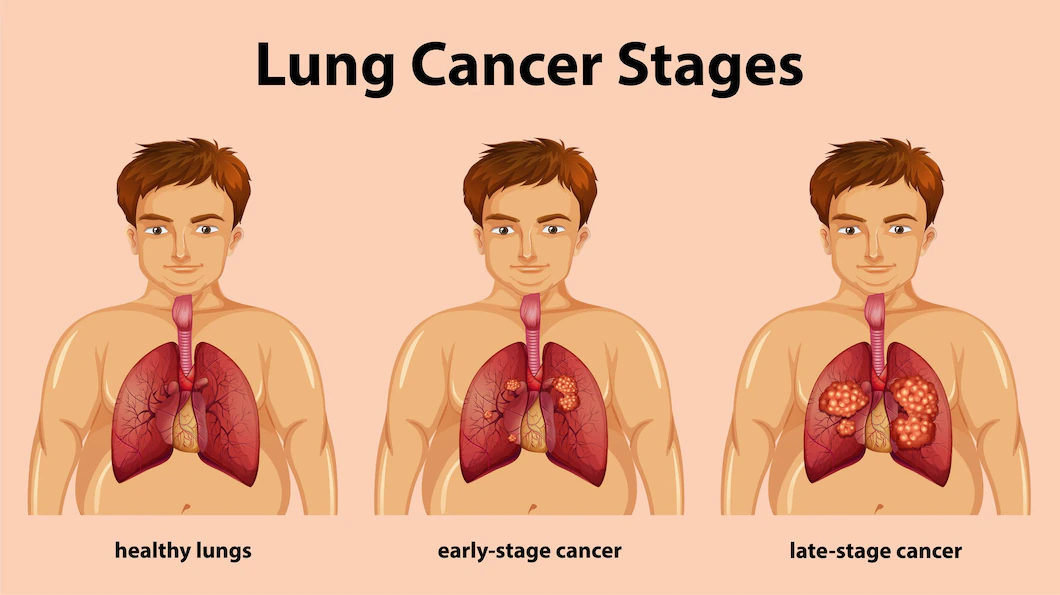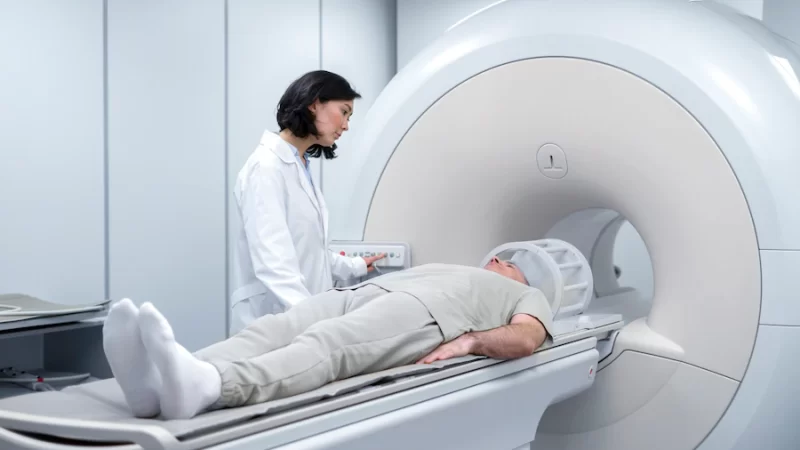A complete guide to learn everything about lung cancer.

Lung cancer usually develops when the cells in the lungs grow too quickly without dying off and eventually leads to the development of tumour. In India, lung cancer constitutes 6.9% of all new cancer cases and 9.3% of all cancer related deaths in both sexes; it is the commonest cancer and cause of cancer-related mortality in men.
Types of Lung Cancer
Depending upon the size and rate of growth of tumour cells and appearance, lung cancer is broadly divided into two categories:
1. Non-Small Lung Cancer (NSLC)
It is the most common type of lung cancer. Around 85% of cases constitute this type. On the basis of the location and extent of spread of tumour, it is divided into 3 subtypes:
a. Adenocarcinoma
b. Squamous cells cancer
c. Large cell carcinoma
2. Small Cell Lung Cancer (SCLC)
Around 10% of people suffering from lung cancer get affected by this type. In SCLC, the cancer cell grows and spreads faster than NSLC. However, it responds well to chemotherapy and radiation therapy and it is more likely to recover.
Signs and Symptoms
The most common symptoms of lung cancer are the same as the ones shown in respiratory infection. Though these symptoms mostly occur at later stages, this is the first step in the detection process. These include:
1. Change in a person’s voice, such as hoarseness
2. Frequent chest infections, such as bronchitis and pneumonia
3. Swelling in the lymph nodes in the middle of chest
4. A lingering cough that may start to get worse
5. Chest pain
6. Shortness of breath and wheezing
7. Bone pain and bone fractures
8. Headaches
9. Coughing of blood
10. Blood clots
11. Appetite loss and weight loss
12. Fatigue
Risk Factors
There are several factors which increase the risk of developing lung cancer. These generally include:
1. Smoking tobacco or excessive use of cannabis is the leading cause of developing lung cancer.
2. Prolonged exposure to factory smoke or other polluted air and second-hand smoke.
3. Exposure to some radioactive gases and substances like radon, asbestos and other carcinogens like uranium, arsenic etc.
4. Prior exposure to radiation therapy for any cancer treatment.
5. A lineage or family history of lung cancer increases the chances of a person developing it.
Stages of Lung Cancer
The extent, spread or severity in stage of cancer, helps the healthcare professionals and doctors to suggest and perform suitable course of treatment. Based on the size of tumour and its spread, these stages are defined:
Stages of Non-Small Cell Lung Cancer:
1. Occult or Hidden: In this stage, cancer doesn’t appear in imaging tests; though, mucus and phlegm might contain cancerous cells.
2. Stage 0: Abnormal cells grow in the lining of the airways.
3. Stage 1: Small tumour is present in the lungs but hasn’t spread to other parts.
4. Stage 2: The tumour has become large and had spread to the nearby lymph or nodes.
5. Stage 3: The cancer has spread to lymph nodes and reached other parts of the body.
6. Stage 4: The cancer has spread to distant body parts and other organs.
Stages of Small Cell Lung Cancer:
Limited Stage: In this stage, the cancer is confined only to side of the chest and might be present in the surrounding lymph nodes.
Extensive Stage: The cancer has spread to the other lung and also to the other parts of the body.
Diagnostic Procedures
On detecting any symptoms, the doctors, after critically examining the medical history, would suggest physical exams and tests for the detection of lung cancer. Some of the major tests include:
1. Imaging tests such as X-rays, CT scans, MRI, PET scan and Bone Scan are done to identify area, extent and size of the tumour and whether it has spread to other parts of the body.
2. Sputum cytology: In this, the sputum sample is examined under microscope to detect the presence of lung cancer.
3. Tissue sample or biopsy: In this, a sample of cancerous cell is taken and is examined for the detection of cancer.
4. Thoracentesis: In this procedure, a fluid is taken from around the lungs to find out whether it is secreted due to cancer.
5. Bronchoscopy: It is done to find out the blockage or tumours in the airways.
Treatments
Surgery: Various surgical procedures like lobectomy, segmentectomy, pneumonectomy etc. are done to remove the tumour from the lungs and the lymph nodes.
Radiation Therapy: In this, high beam radiations are used to target the tumour cells.
Chemotherapy: It is often used after surgery to kill any remaining cells and for cubing any the changes of reappearing.
Stereotactic Body Radiotherapy: It is a radio surgery in which high beam radiations are used to target the cancerous cells from various directions.
Immunotherapy: In this, special kind of drugs are used to boost the immune system so that they can eliminate the cancer cells from the body.
On the detection of any symptom or sign, the doctors might suggest a number of tests or diagnostic procedures and treatments for effective treatment of the lung cancer. Yashoda Superspeciality Hospital & Cancer Institute, Sanjay Nagar provides the possible treatments in Delhi NCR and Ghaziabad. All the diagnostic procedures and tests with the most advanced technologies are available at one place.
For any query or issues relating to lung cancer, feel free to reach to our to our ex-army & Tata Memorial Hospital trained oncologists, Dr. (Maj. Gen.) B.N. Kapur and Dr. (Brig.) Arvind Kumar Tyagi. With more than 30 years of medical experience and over 50,000 happy patients, they are the best experts for you to reach out to. Book an appointment now at Yashoda Hospital and get the best treatment for Lung Cancer.




